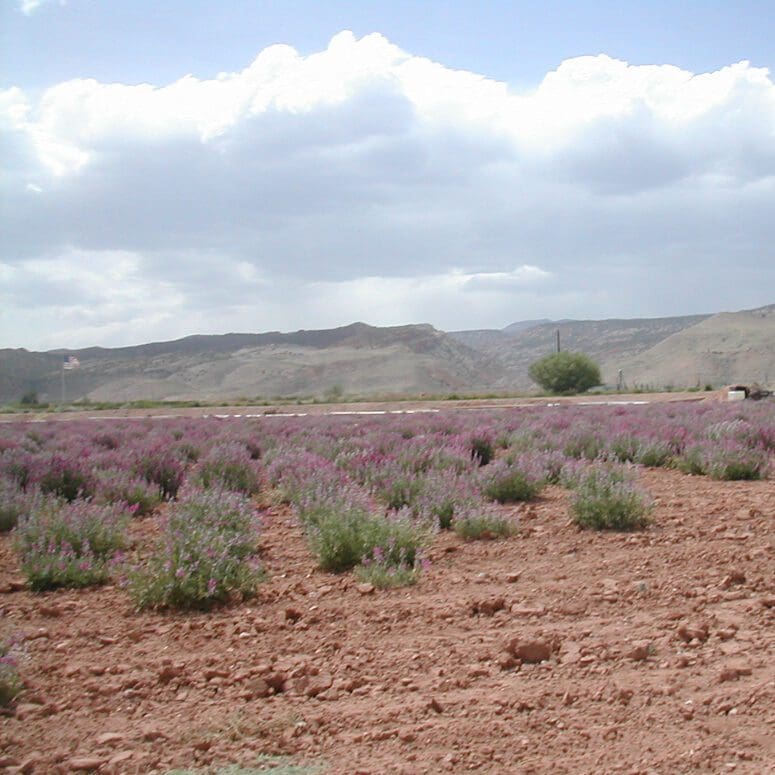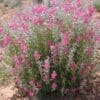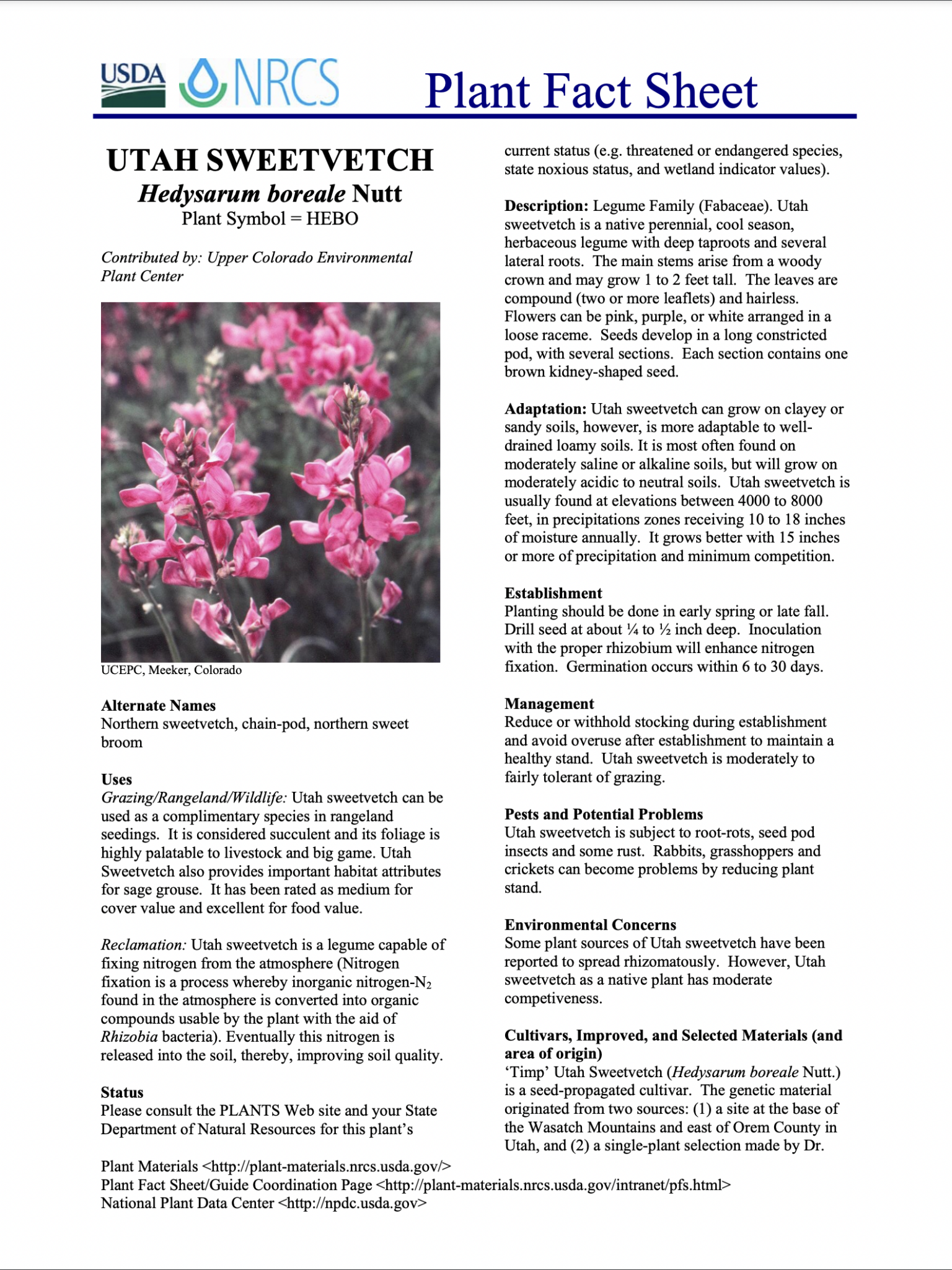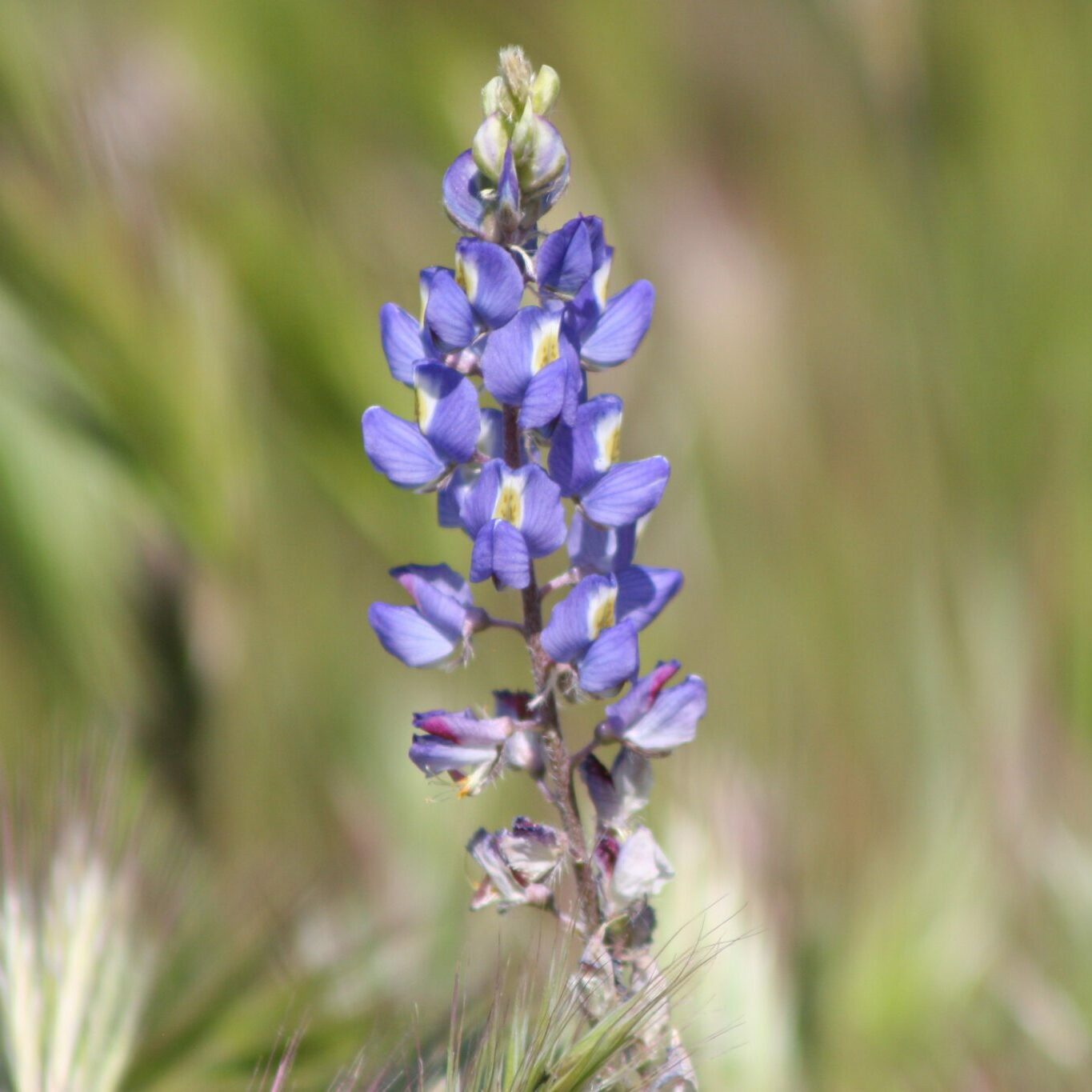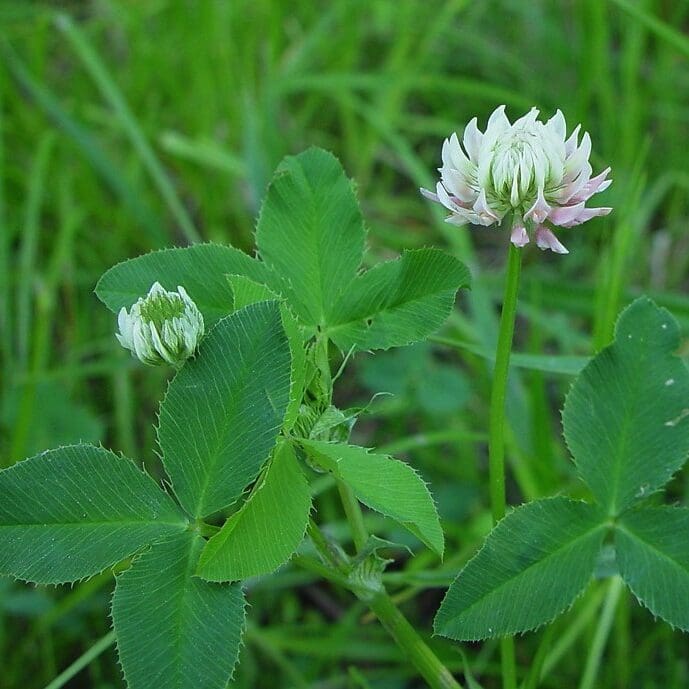Utah Sweetvetch
- Bright pink/purple flowers with white highlights
- Adaptable to most anywhere in the US
- Valuable for range and wildlife habitat improvement
- Nitrogen fixing forb
- Highly palatable to livestock and big game
- Valued in reclamation mixes
40 in stock
Utah Sweetvetch, also known as Northern Sweetvetch, is a native perennial, cool season, herbaceous legume with deep taproots and several lateral roots. It blooms bright white, pinkish, purplish flowers and can grow to be 2 feet tall. This forb is adaptable to most anywhere in the US as is can grow in elevations of 3,000 to 5,000 feet. Grows best on soils ranging from sandy to clay. Utah Sweetvetch provides good palatability for wildlife and livestock and is valuable for range and wildlife habitat improvement. It is a legume capable of fixing nitrogen from the atmosphere.
It can be used as a complimentary species in rangeland seedings. It is considered succulent and its foliage is highly palatable to livestock and big game. Utah Sweetvetch also provides important habitat attributes for sage grouse. It has been rated as medium for cover value and excellent for food value.
Utah sweetvetch can grow on clayey or sandy soils, however, is more adaptable to well- drained loamy soils. It is most often found on moderately saline or alkaline soils, but will grow on moderately acidic to neutral soils. Utah sweetvetch is usually found at elevations between 4000 to 8000 feet, in precipitations zones receiving 10 to 18 inches of moisture annually. It grows better with 15 inches or more of precipitation and minimum competition.
Planting should be done in early spring or late fall. Drill seed at about 1⁄4 to 1⁄2 inch deep. Inoculation with the proper rhizobium will enhance nitrogen fixation. Germination occurs within 6 to 30 days.
Reduce or withhold stocking during establishment and avoid overuse after establishment to maintain a healthy stand. Utah sweetvetch is moderately to fairly tolerant of grazing.
Utah sweetvetch is subject to root-rots, seed pod insects and some rust. Rabbits, grasshoppers and crickets can become problems by reducing plant stand.
‘Timp’ was selected based on its seedling vigor, site adaptability, persistence, seed production, dinitrogen fixation, and stability. It was released in 1994 by Upper Colorado Environmental Plant Center, Utah Division of Wildlife Resources, Colorado State University Agricultural Experiment Station, Utah State University Agricultural Experiment Station, and USDA-Soil Conservation Service. It is adapted to a wide range of soil types, however, performs better in well-drained loamy soils. It has proven acceptable performance where the annual precipitation ranges from 12 to 18 inches. Great Basin Seed sells ‘Timp’ certified seed.
Scientific Name: Hedysarum boreale utahensis
***Click on the “Quick Plant Facts” tab above for more information.
Utah Sweetvetch NRCS Plant Fact Sheet
Utah Sweetvetch NRCS Plant Fact Sheet
PDF version of NRCS Plant Guide & Fact Sheet
Prepared By & Species Coordinator:
Manuel Rosales, USDA NRCS Upper Colorado
Environmental Plant Center, Meeker, Colorado
Helpful Links
Additional information about this product can be found on the academic websites linked below.
Synonyms
Many plants have more than one common and scientific name. We've listed a few of them below.
- Utah Sweetvetch
- Hedysarum boreal
Quick Plant Facts
| Common Name: | Northern Sweetvetch, Utah Northern Sweetvetch |
|---|---|
| Scientific Name: | |
| Plant Type: | |
| Origin: | |
| Lifespan: | |
| Available Varieties: | |
| Seed Count | 33,500 seeds/lb. |
| Zone Map | comingsoon.gif |
| Growth Height: | |
| Planting Rate: | |
| Min. Precipitation: | |
| Best Time to Sow: | |
| Max Sowing Depth: | |
| Root Form: | |
| Sun & Shade Tolerance: | Full or Partial Sun, Shade Intolerant |
| Elevation of Occurance: | |
| pH Tolerance: | |
| Hardiness Zones: |


